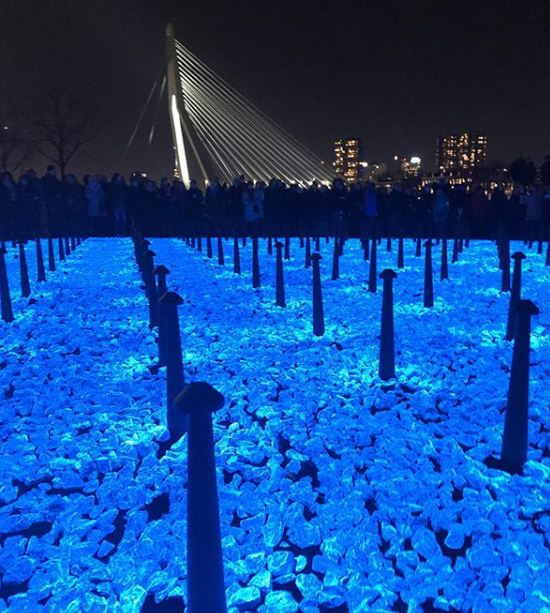This is the year which marks 75 years since the Auschwitz concentration and extermination camp, in Poland, was liberated by the Soviet Union. It was the complex, operated by Nazi Germany in occupied Poland during World War II and the Holocaust.
A new memorial was unveiled on Thursday, January 16 in Rotterdam which is made up with 104,000 light-emitting stones commemorating the Dutch victims of the horrible Holocaust. The artist behind this stonework was Daan Roosegaarde, who mentioned that the monument called "Levenslicht," or "Light of Life," is inspired from the Jewish custom of placing stones on or near a grave to honour the deceased.
Light-emitting stones in Rotterdam

One stone for each Dutch victim of the Holocaust was displayed in on the banks of the River Maas in Rotterdam. These light-emitting stones to be spread around the country to more than 170 municipalities from which Jews, Roma and Sinti people were taken to the Nazi occupation during World War II.
Gerdi Verbeet, the head of the commemoration organization National Committee said that this idea of placing the light-emitting stones is to honour all the Dutch citizens who were taken from their homes by the Germans and then murdered in the Nazi concentration camp.
While talking about the 75th anniversary, Verbeet said, "You can't celebrate 75 years of freedom without standing still to consider the people who did not live to see liberation."
The memorial
It should be noted the memorial uses invisible ultraviolet light to glow up the stones with fluorescent pigments in the dark every few seconds. These stones will be on display around the country between January 22 and February 2. However, two weeks later, world leaders will gather at Auschwitz on January 27 for the 75th anniversary of the liberation.
History of Auschwitz concentration
This Poland based camp is considered as a symbol of terror. It was established in 1940 in the suburbs of Oswiecim, a Polish city that was annexed to the Third Reich by the Nazis. The Germans had built this camp as mass arrests of Polish people were increasing beyond the capacity of existing local prisons.
"It functioned in this role throughout its existence, even when, beginning in 1942, it also became the largest of the extermination centres where the "Endlösung der Judenfrage" (the final solution to the Jewish question - the Nazi plan to murder European Jews) was carried out," mentioned in the Auschwitz.org website.
Here are the pictures of the memorial:









